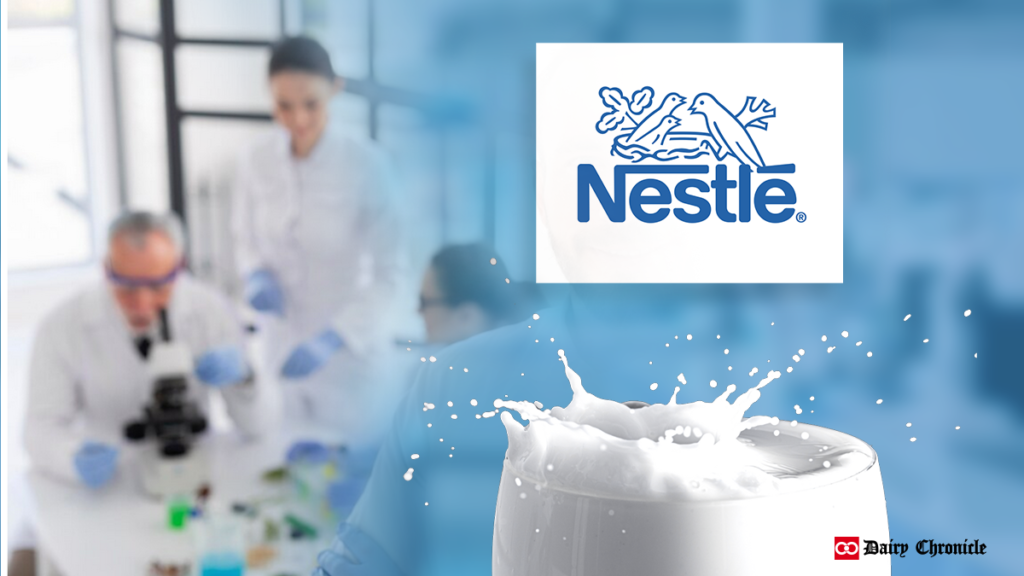Nestlé has launched a technology that cuts milk powder fat by up to 60% using controlled protein aggregation. This method preserves creaminess while reducing calories. Initially successful in Brazil’s Ninho Adulto, it will soon expand globally across the Nido range. This innovation aligns with Nestlé’s goal of providing healthier, affordable dairy options and complements other advancements like reduced sugars and improved chocolate creaminess.
Nestlé has recently unveiled groundbreaking technology aimed at significantly reducing the fat content in milk powder by up to 60%. This advancement represents a major stride in the company’s ongoing efforts to enhance the nutritional profile of its dairy products while maintaining the taste and texture that consumers love. This new approach not only addresses the demand for healthier dairy options but also aligns with Nestlé’s commitment to affordability, sustainability, and improved nutritional value.
The Technology Behind Fat Reduction
The key to Nestlé’s new fat reduction technology lies in the controlled aggregation of milk proteins. This innovative process enables the company to replicate the size and texture of milk fat using protein, thereby achieving a substantial reduction in fat content without compromising on the sensory attributes of the dairy product.
How It Works:
- Controlled Aggregation: By precisely manipulating milk proteins, Nestlé mimics the characteristics of milk fat. This method ensures that the end product maintains a desirable creaminess and mouthfeel.
- Lower Calorie Levels: The result is a product with lower calorie levels compared to traditional full-fat milk, meeting the growing consumer demand for healthier dairy alternatives.
This technology allows Nestlé to offer dairy products that are not only lower in fat but also rich in flavor and texture, thereby providing a healthier option without sacrificing taste.
Announcement
Isabelle Bureau-Franz, head of R&D for Nestlé’s nutrition business, mentioned in Nestlé’s official announcement,
“Leveraging our expertise in nutrition science and product development, we have successfully introduced this proprietary technology in Ninho Adulto in Brazil and reduced the level of milk fat in the product significantly. Our new milk brings creaminess and mouthfeel and is preferred by consumers.”
Isabelle Bureau-Franz, Head of R&D for Nestlé
Global Rollout and Future Plans
The positive reception of the product in Brazil underscores the effectiveness of the technology in delivering a product that meets both health and taste expectations. The success in Brazil serves as a model for how this technology can be applied to other products in the company’s portfolio.
Laurent Alsteens, global category head in Nestlé’s nutrition strategic business unit, emphasized that this development marks a significant milestone in Nestlé’s approach to providing healthier dairy options without compromising on taste. Alsteens confirmed plans to roll out this technology across the Nido portfolio globally, aiming to address evolving customer expectations and drive demand for these enhanced products.
Future Prospects:
- Global Expansion: The technology will be introduced to various markets, extending the benefits of reduced fat content to a broader consumer base.
- Enhanced Product Range: Nestlé plans to integrate this fat reduction method into other products within its dairy range, further diversifying its healthier options.
Broader Strategy and Innovations
Nestlé’s fat reduction technology is part of a broader strategy that includes several science-based solutions developed by its R&D teams. Other notable innovations include:
- Enzymatic Process: Designed to reduce intrinsic sugars in key ingredients, further enhancing the nutritional profile of Nestlé’s products.
- Micro-Aeration Technology: This proprietary technology improves the creaminess of chocolate, catering to consumer taste preferences while maintaining lower fat levels.
These innovations reflect Nestlé’s commitment to leveraging science and technology to meet consumer demands for healthier and more sustainable food options.
Nestlé’s new technology for reducing fat content in dairy ingredients marks a significant advancement in the company’s efforts to enhance the nutritional profile of its products. By employing controlled aggregation of milk proteins, Nestlé has achieved a substantial reduction in fat content while preserving the taste and texture that consumers expect. The successful implementation in Brazil and plans for a global rollout underscore the company’s dedication to providing healthier dairy options and addressing evolving consumer preferences. As part of a broader strategy that includes various innovative solutions, Nestlé continues to lead the way in developing science-based approaches to meet the demands of a health-conscious market.



